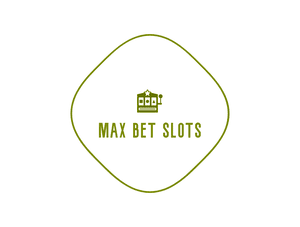The Draw No Bet (DNB) handicap is a betting option that differentiates itself from traditional betting markets by offering a safety feature. In DNB, if the match concludes in a draw, your stake is returned. This option concentrates solely on predicting a win for either team, simplifying the betting process compared to the standard 1X2 markets, which include the possibility of a draw as a separate outcome.
The appeal of the DNB option lies in its ability to mitigate risk, making it attractive to both inexperienced and experienced bettors. By eliminating the draw as a losing outcome, it provides a level of security that can be particularly beneficial in closely matched games where the likelihood of a draw is higher.
However, it is important to be aware of certain considerations when using DNB. The odds for DNB bets are typically lower than those for traditional win bets, reflecting the reduced risk. Bettors should weigh this trade-off between potential returns and risk mitigation.
Additionally, understanding the specific conditions and terms offered by different bookmakers for DNB options is crucial to making informed betting decisions.
In summary, the Draw No Bet handicap offers a balanced approach by providing a refund if a match ends in a draw while focusing on a win outcome. This makes it a viable option for those looking to reduce risk, though it comes with the trade-off of lower odds.
What Is Draw No Bet
In sports betting, the “Draw No Bet” option provides a strategic way to manage risk. This type of wager allows bettors to back a team to win, with the added security that if the match concludes in a draw, the original stake is refunded.
This approach reduces the potential for losses associated with betting on a single outcome. It’s particularly useful when there’s uncertainty about a team’s capacity to secure an outright victory, yet confidence exists that they’ll not be defeated.
The “Draw No Bet” option is prevalent in sports such as soccer, where draws are a frequent result. While this betting strategy minimizes risk, it generally comes with lower odds compared to traditional betting options, reflecting the reduced risk factor.
How It Differs From 1X2 Betting
When comparing “Draw No Bet” to 1X2 betting, the differences are both clear and significant.
In 1X2 betting, there are three possible outcomes to consider: a home win, an away win, or a draw. The bettor must select one outcome, and if the match concludes in a draw, the bet is lost unless the draw was chosen.
In contrast, “Draw No Bet” removes the draw as a potential outcome for the bettor. If the match ends in a draw, the bettor’s stake is refunded, thereby reducing the risk. Another bet, that reduces risk with its nature is First Goalscorer Bet, where winners don’t matter, just the one who scores the first goal.
This approach allows a bettor to focus on predicting either a home or away win, providing a different risk-reward balance without the need to account for a draw. Consequently, it alters the betting strategy by shifting the emphasis from predicting all possible outcomes to concentrating on securing a win for one side.
Benefits of Draw No Bet
“Draw No Bet” is a betting option that offers specific advantages over traditional 1X2 betting. This betting format reduces risk by removing the draw outcome from consideration. If a match ends in a draw, the bettor receives their stake back, thereby minimizing potential losses.
This option caters to bettors who prefer a more conservative approach, focusing solely on wins. It simplifies decision-making, as the bettor can support a team without the concern that a draw will negatively impact their wager.
Additionally, “Draw No Bet” often provides better odds compared to double chance bets, offering increased value. By selecting “Draw No Bet,” bettors can achieve a balance between risk and reward, making it a practical choice for both newcomers and experienced bettors.
Calculating Potential Returns
To accurately calculate potential returns in a “Draw No Bet” scenario, it’s essential to understand the mechanics of the odds involved. In this betting option, the odds represent the probability of either team winning, excluding the possibility of a draw.
By selecting this option, you mitigate the risk of losing your stake if the match concludes in a draw, as your initial stake is refunded.
To determine potential returns, multiply your stake by the odds offered for your selected team. For instance, if you place a $100 bet on a team with odds of 2.50, your potential return would be $250 (stake multiplied by odds).
It’s important to note that if the match ends in a draw, you’ll receive your original stake back, but there will be no additional winnings. This calculation provides a clear understanding of the financial outcomes before you decide to place a bet.
Draw No Bet in Football
Understanding the calculation of potential returns is essential when applying the “Draw No Bet” strategy in football. This betting option mitigates the risk associated with a draw by refunding your stake if the match doesn’t produce a winner. As a result, the risk is reduced compared to traditional win-lose betting.
To effectively utilize this strategy, it’s advisable to concentrate on matches where the outcome is uncertain and the teams are closely matched. Key factors to analyze include team form, injuries, and head-to-head statistics.
Such analysis can help identify situations where the odds may be favorable. This method can enhance your betting strategy by enabling more informed decision-making.
Applying Strategy in Betting
When implementing a strategy in betting, it’s essential to thoroughly understand the various factors that can affect the outcome of a game. Analyze team performance trends, player injuries, and historical matchups to gain valuable insights. Relying solely on chance is insufficient; instead, examine statistical data to make well-informed decisions.
Additionally, consider the influence of the venue and weather conditions, as these can affect the performance of the teams involved.
Maintain a disciplined approach by establishing a budget and adhering to it, thereby preventing the pursuit of losses or impulsive betting behavior. Keeping a record of your bets is advisable in order to track successful strategies and make necessary adjustments.
It’s important to avoid allowing emotions to influence betting decisions, as biases can impair judgment. Rely on your research and intuition, integrating data-driven insights with a clear strategy to enhance the probability of favorable outcomes.
Comparing With Asian Handicap
The Draw No Bet (DNB) and Asian Handicap betting options offer distinct methods for managing risk in sports betting, each with specific characteristics.
The DNB option removes the risk of a draw impacting the outcome of your wager. If the event concludes in a draw, the bettor’s stake is refunded. This approach is straightforward and may appeal to individuals seeking to minimize complexity in their betting strategy.
Conversely, Asian Handicap betting provides a more complex framework by incorporating handicap lines that attempt to balance the competitive disparity between teams. This type of betting can potentially enhance returns due to adjusted odds that reflect the perceived advantage or disadvantage of a team.
While DNB primarily focuses on mitigating the outcome of a draw, Asian Handicap betting offers the opportunity to utilize point spreads, which may be attractive to bettors interested in a more strategic and analytical approach.
Risk Management Techniques
In the context of sports betting, implementing effective risk management techniques is essential for protecting your bankroll and promoting sustainable long-term success.
Initially, it’s important to establish a clear budget for betting activities and adhere to it strictly, regardless of confidence levels in any particular bet. This practice prevents the possibility of gambling with funds that are needed for other financial obligations.
Diversification of bets is another key strategy, as it reduces the impact of any single loss by spreading the risk across multiple outcomes.
Additionally, employing a staking plan, such as flat or percentage staking, can help in consistently managing the size of wagers. Flat staking involves placing the same monetary amount on each bet, while percentage staking adjusts the bet size proportionally to changes in the bankroll.
Maintaining emotional control is also critical, as emotions can interfere with objective decision-making and lead to impulsive betting choices.
Choosing the Right Matches
Selecting appropriate matches for betting is fundamental to improving your chances of success.
Begin by assessing the teams’ current form. This involves analyzing their recent performances, noting any injuries, and acknowledging changes in coaching staff. Teams displaying strong form may have an increased likelihood of positive outcomes, making them potentially suitable for a Draw No Bet strategy.
Additionally, consider the head-to-head records of the teams involved. Some teams consistently achieve favorable results against specific opponents, which can provide useful insights.
Furthermore, evaluate the teams’ performances in home and away games, as teams often perform better on their home ground.
Lastly, consider external factors such as weather conditions and the absence of key players, as these can impact the outcome of the game.
Common Mistakes to Avoid
To increase your success in Draw No Bet betting, it’s crucial to recognize common pitfalls alongside selecting appropriate matches.
Firstly, conducting thorough research is essential. While betting based on team popularity might be appealing, factors such as team form and player injuries can significantly influence outcomes.
Secondly, it’s important to avoid excessive betting. Confidence can lead to placing more bets than advisable, which may result in avoidable losses.
Thirdly, consider the odds carefully. Although Draw No Bet provides a level of security, low odds can result in minimal returns, which can impact your overall betting strategy.
Lastly, managing emotions is critical. Betting out of emotion, particularly after a loss, can impair judgment and lead to further errors. Maintaining discipline and a strategic approach is advisable.
Frequently Asked Questions
How Does Draw No Bet Affect Live Betting Odds?
When you bet live, draw no bet reduces risk by eliminating the draw outcome. Odds often shift more prominently as the game progresses, reflecting real-time play, making it crucial to stay attentive and ready to seize opportunities.
Can Draw No Bet Be Combined With Accumulator Bets?
Yes, you can combine draw no bet with accumulator bets. By doing this, you increase your potential returns while reducing risk. Just remember that if any match ends in a draw, that leg is voided.
Are Draw No Bet Options Available in All Sports?
You’re curious about draw no bet options across sports. They’re not universally available, but popular in football. Check your bookmaker’s offerings for specifics. Always explore various betting markets to find what suits your strategy best.
How Do Bookmakers Set Odds for Draw No Bet Markets?
Bookmakers set odds for draw no bet markets by analyzing team performance, player stats, and historical data. They assess each team’s likelihood of winning, then adjust odds to balance bets and ensure profitability while factoring in potential draws.
What Impact Does Team Form Have on Draw No Bet Odds?
You’ll notice team form heavily influences draw no bet odds. When a team performs well, their odds decrease, making them less profitable. Conversely, if a team’s struggling, odds increase, offering better potential returns for risk-takers.
Conclusion
Incorporating Draw No Bet into your betting strategy can be a game-changer. It offers a safer way to wager by eliminating the risk of a draw, which can simplify your decision-making process. As you’ve learned, it stands apart from traditional 1X2 betting and provides an easier alternative to the Asian handicap. By managing risks effectively and choosing the right matches, you can enhance your betting experience and potentially increase your returns. Avoid common mistakes, and you’ll be well-prepared.

